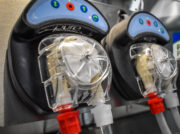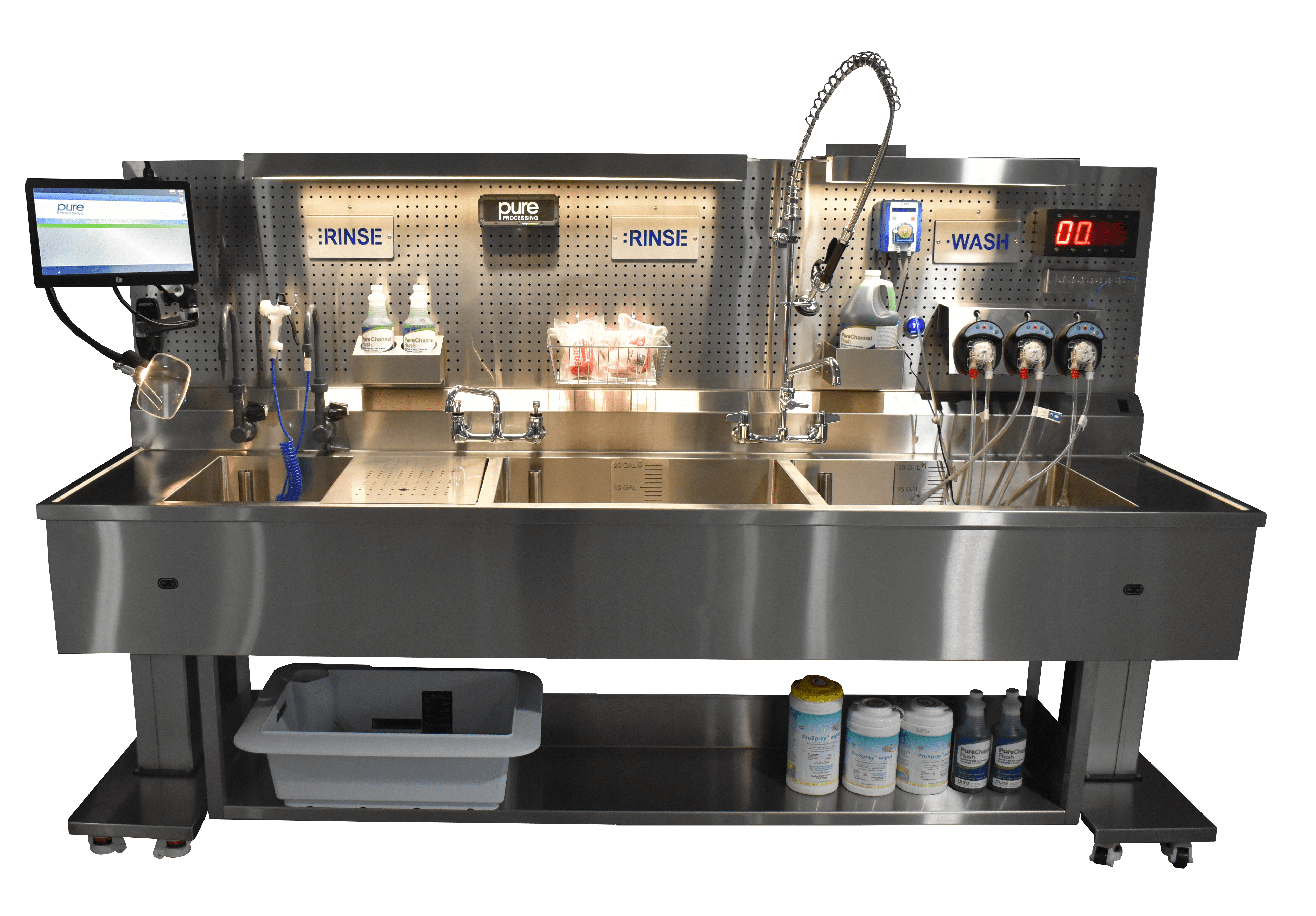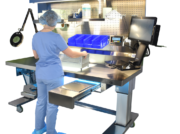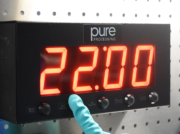
Ultrasonic Cleaning: How it Works
Ultrasonics can be found in most sterile processing departments today and are often the first automated cleaning cycle medical devices will be subject to after manual cleaning is complete. The intent of the ultrasonic cycle is to clean and remove soil from areas that aren’t easily accessible via manual cleaning steps like brushing or wiping. These tough to reach areas can include joints, lumens, and crevices; areas where bioburden can build up over time, unseen.
Ever been curious to know exactly how this ultrasonic bath works and what makes it such a critical step in decontamination? We will unpack the definition, the steps and the maintenance, so that you can get the most out of your ultrasonic use!
First, Some Definitions
According to the HSPA Sterile Processing Technician Manual, Ninth edition, the definition of ultrasonics is broken down this way: “Ultra’ means beyond and ‘sonic’ mean sound. When an ultrasonic wave passes through a liquid, it makes the liquid vibrate.” This creates what we know as cavitation. The ultrasound waves create low-pressure bubbles within the ultrasonic bath that implode, dislodging soil from surgical instruments.
Ultrasonic sound waves can range anywhere from 18-100 kHz, with many in SPD within the range of 40 kHz. A study conducted found that 40 kHz provided a “very uniform ultrasonic cleaning field and higher cleaning capability” (HPN, 2024)
When we can define our equipment and processes, we are better able to speak clearly to its intended purpose and use this knowledge to empower and guide our facility practices.
The Process Basics
There are key practices to note when ultrasonic cleaning is part of your workflow. ANSI/AAMI ST79 Section 7.6.4.4 highlights key recommendations on how to effectively and safely utilize ultrasonic cleaning: “Gross soils and detergents should be removed before instrumentation is placed in the ultrasonic equipment. Residual gross soil and detergents left on instrumentation can impact the effectiveness of the ultrasonic cycle and the overall cleanliness of the instrument.”
Instrumentation that is subject to ultrasonic cleaning must be fully submerged in the ultrasonic bath and run on the appropriate cycle length based on the manufacturer IFU.
There are cleaning solutions designed specifically for ultrasonic cleaners. These specific enzymes are formulated to enhance the ultrasound cleaning capabilities and work with the cavitation process to remove gross soil from instrument crevices and areas that cannot be reached by manual methods. Reviewing your equipment IFU will help you determine the appropriate one to use with your specific machine.
After the ultrasonic cycle is complete, instrumentation should be rinsed to remove any residual ultrasonic cleaning chemistries and contaminants before moving on to the next phase of the cleaning process.
There are various types of ultrasonic cleaners available today ranging from table-top to irrigating. It’s important to know the type, features and capabilities that your surgical instruments require and plan appropriately.
Maintenance & Usage Recommendations
Just like the surgical instrumentation we care for, our cleaning equipment also requires care and maintenance. The details of care can be found in our equipment manufacturer IFUs, but universally there are some basic steps that should be taken to care for your ultrasonic cleaners.
Do:
- Perform routine maintenance such as cavitation testing and cleaning verification tests. You can reach out to your ultrasonic manufacturer for recommended test types and frequency.
- Cleaning your ultrasonic cleaner on a regular cadence as recommended by the equipment manufacturer.
- Keep the lid of your ultrasonic closed during the cleaning cycle to reduce aerosolization from spreading across the department.
- Degas your ultrasonic bath each time the cleaning solution is replaced. The practice of degassing removes any trapped air or other gases that may impact the cleaning solution and impede cavitation from occurring.
Don’t:
- Avoid placing materials such as glass, soft metal and plastics in your ultrasonic cleaner. Verifying material compatibility ensures that instruments are not damaged, nor does the type of material impact the effectiveness of the ultrasonic cycle.
- Avoid overloading your ultrasonic baths as this can also impact ultrasonic cycles and hinder contact exposure of the surgical instrumentation with the enzymatic solution.
Ultrasonic cleaning is only as effective as the care we take to prepare and handle both the ultrasonic and the surgical instrumentation subject to its intricate cleaning capabilities.
Ultrasonics are a great tool in our cleaning process. The more we understand the process, the better equipped we are to use its capabilities to its fullest extent.
References
· HSPA Sterile Processing Technician Manual, 9th Edition (2023)
· ANSI/AAMI ST79
· General Ultrasonic Cleaning Questions, HPN 2024 https://www.hpnonline.com/sterile-processing/article/55128962/general-ultrasonic-cleaner-questions





